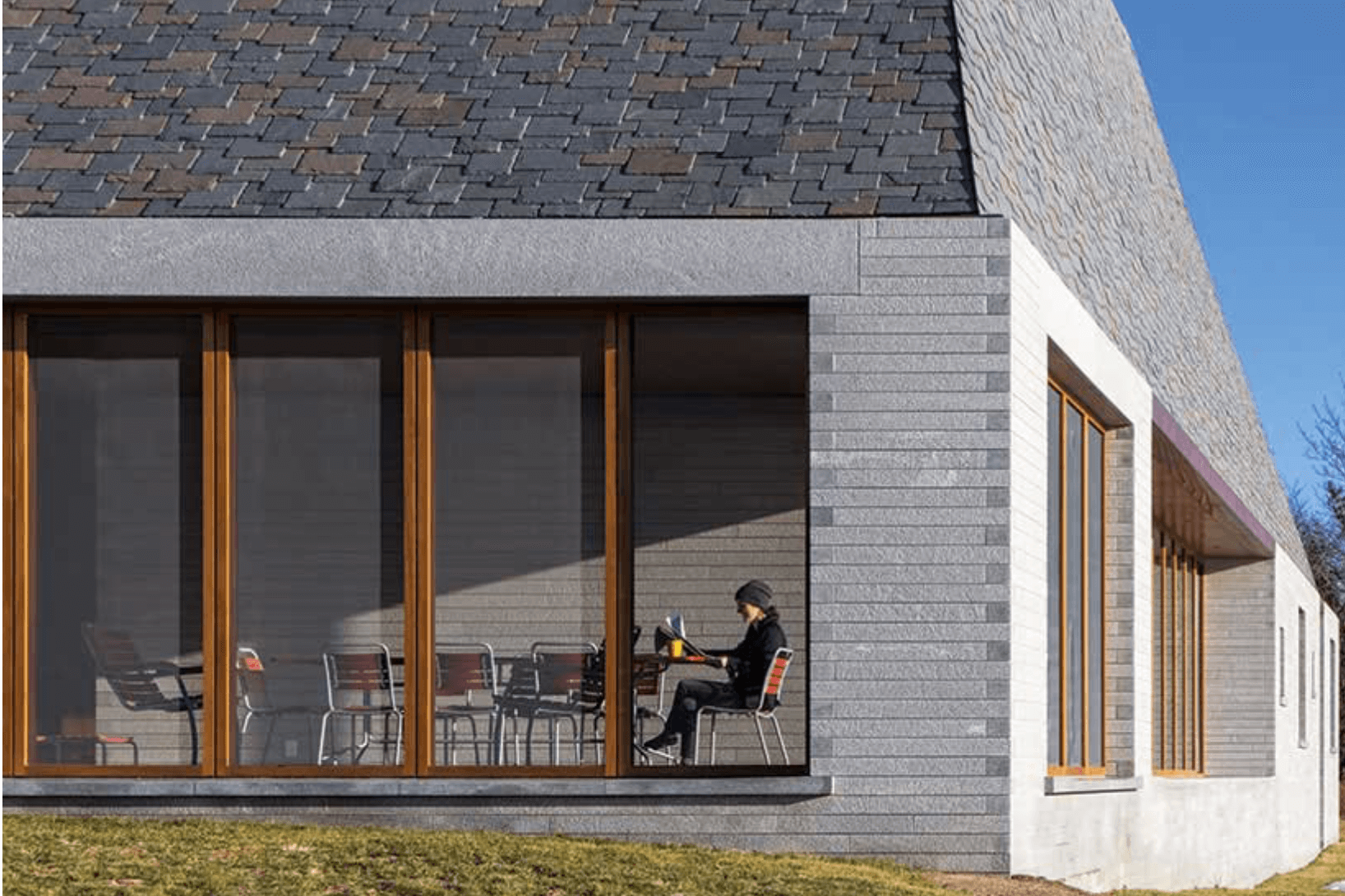Bayhouse & New England Slate, the process explained
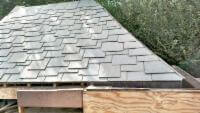

As you may have seen in the April 2019 issue of Architectural Record, https://www.architecturalrecord.com/articles/13986-bayhouse-by-studio-rick-joy, we are proud to have worked with architect Studio Rick Joy, and custom builder DowBuilt on their “Bayhouse” project.
It all started when the architect sent us two photos (see below) as inspiration for a slate roof on a new project he was designing. Immediately we noticed the woven and curved valley and thought how could that curved valley be slate? It turns out it wasn’t slate at all, but cast aluminum tiles. Intrigued by the challenge, we immediately got to work thinking how we would replicate that pattern in slate.

Hiroshi Nakamura’s Sayama Lakeside Cemetery Park Community Hall and Forest Chapel, Japan
Cast in six rectangular shapes. the malleable plates were bent by hand to accommodate the buildings curves.
The architectural team designed a pattern of six different size slates that met their aesthetic objectives (see drawing below). While we could have simply quoted the project based on their rendering, we thought the conceptual drawings needed to be explored in order to provide the best roof possible. We created a mock up in our shop to replicate the roof in their drawing. As with many other types of projects, actually executing a design by cutting and nailing real slate offered many insights. Being a roofing installation, the primary concern is keeping water out – so maintaining proper head lap (amount of overlapping of courses) and side lap (location of side joints relative to side joints in courses above and below) is critical.
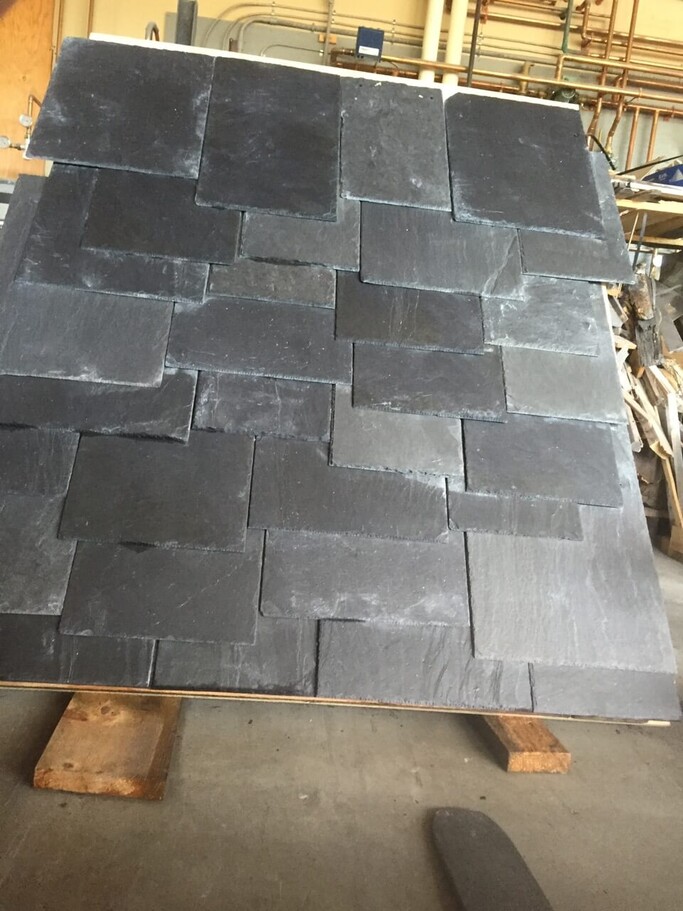
Specs called for custom sizes of 17″ x 10″, 17″ x 14″, 18″ x 14″,
19″ x 10″, 20″ x 12″ and 20″ x 14″.
New England Slate Mock Up #1
Sample Slate Pattern as specified in the architect’s drawings.
The first mock up was one primarily to evaluate the roof mechanics and used an economical Unfading Black slate from Spain that we just happened to have in 14” wide pieces. We cut each piece as necessary to exactly match the sizes and pattern depicted in the drawings. The mock up we did was about 40% of the area detailed in the drawing, enough to get a good handle on how the design would play out in real life. If you look carefully at the architectural drawings, the bottom right section of the drawing is what is re-created in the mock up.
This hands on evaluation brought several points to light, and the feedback we provided to the design team was:
- The specified 5” head lap requires special nail hole positions and a lot of “wasted” slate due to excessive overlapping. It also creates a longer “lever” for wind uplift of slate, as the distance from the bottom of slate to the easterners is exaggerated.
- Unusual sizes. 17” and 19” slates are very unusual sizes for slate roofing. We can make them, but it will add time and cost. 14” wide slates are also difficult to make. Minimizing the amount of 14” wide slates will make this project more feasible from a production standpoint.
- Side Lap. Really the biggest issue. 1” of side lap results in the joints in between slates lining up over the nail holes. This will give water a direct path into the roof deck and structure. Slate industry standard is for a minimum of 3” side lap. See photo below.
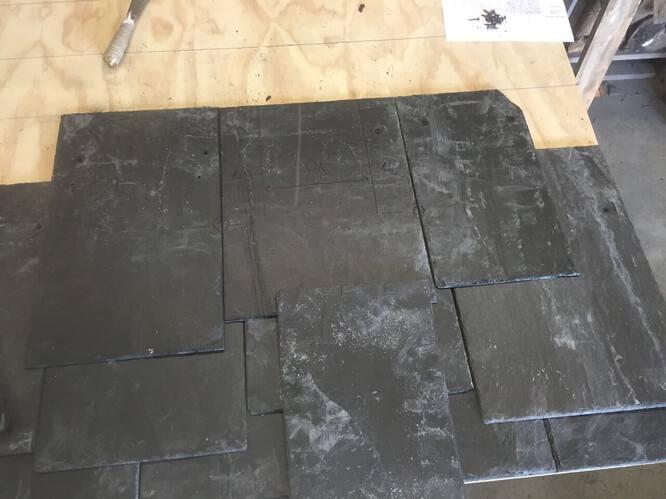
After several conference calls and emails with the design team to discuss our experiences with the first mock up, we proposed a second iteration. The goal was to eliminate the side lap and head lap issues from the original design and to utilize standard slate sizes for cost efficiency.

New England Slate Mock Up #2
Revised Sample Slate Pattern as recommended by New England Slate.
Mock up # 2 utilized Vermont Grey roofing slate, a color under consideration for the project, and used approximately 60% 16” long slate, 25% 18” long slate and 15% 20” long slate. In the 60% 16” long group, there are 8”, 9”, 10”, 11”, 12” and 1 14” wide slate. In the 18” and 20” long groups there are only 10” and 12” wide slates. This mix of sizes provided a visual effect similar to the first mock up, and:
- This installation utilizes the standard 3” headlap, and standard nail hole positions. This maximizes the utility of the slate and minimizes the wind uplift potential.
- This mock up uses standard sizes that are common in the slate industry which will keep costs lower and make production faster.
- This installation maintains a minimum of 3” side lap so joints in between slates do not line up over nail holes.
We explained that our proposed pattern was simply an effort to show an alternate that will keep the structure dry (with proper head lap and side lap) and one that uses common, easily produced slate sizes. We offered to adjust the mix of lengths and widths to meet the architectural design goals, but stressed the importance of proper side lap and head lap. We emphasized that this was not meant to be our only “offer” or option, but just our best effort to achieve a similar aesthetic with standard sized material.
Our input was well received by the design team, and they requested material for an on-site mock up to approve the final color and pattern. (Photo of job site mock up below.)
The mockup utilized standard size slates, with appropriate side and head laps in a planned pattern of widths and lengths to create a pleasing architectural effect. This version was approved by the design team and an order was placed for Vermont Grey roofing slate, 16″ long, 18″ long, and 20″ long slate by 10″ wide, 12″ wide, and 14″ wide, all in a 1/4″ – 3/8″ thickness. All slate was to be installed with a 3″ head lap, and as if they were all 16″ long slates, thus resulting in a “hang down” effect. This installation style requires extra material as the larger slates (18″ and 20″) are only covering the same amount of roof deck as a 16″ tall slate. The visual impact of the hand down is unique and quite dramatic.
Below are several more photos showcasing the slate roof and the amazing installation by the talented slate roofers on this project.
We are proud to gave been a part of this collaborative process, utilizing our natural roofing slate knowledge and experience to help create a legacy roof that will be enjoyed for generations to come.
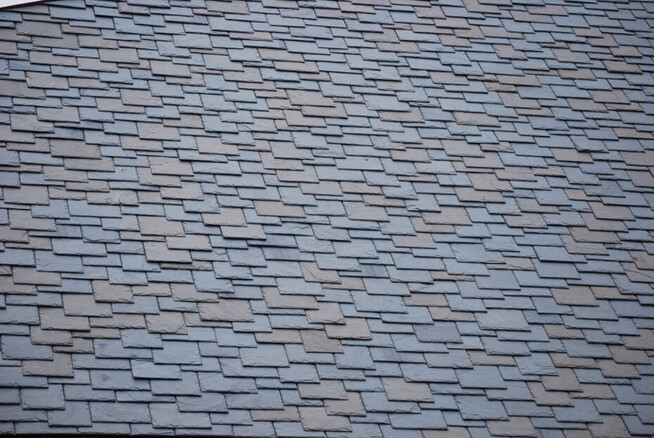
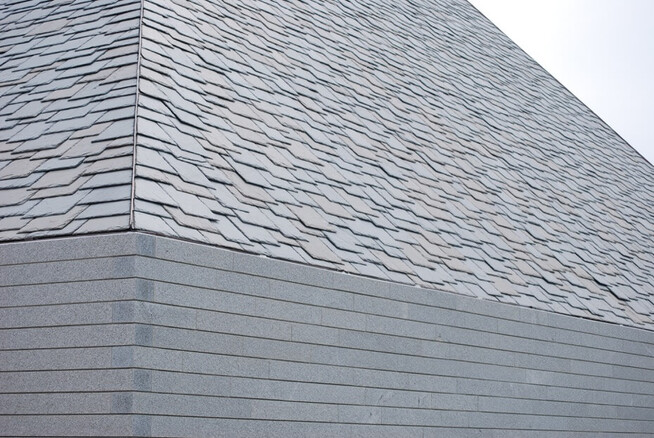
If you have any questions or would like to talk with us about creating your own custom roof on your legacy home, please call or email anytime.
Thank you for reading! Nan
802-287-2295
nan@newenglandslate.comBayhouse & New England Slate, the process explained.
